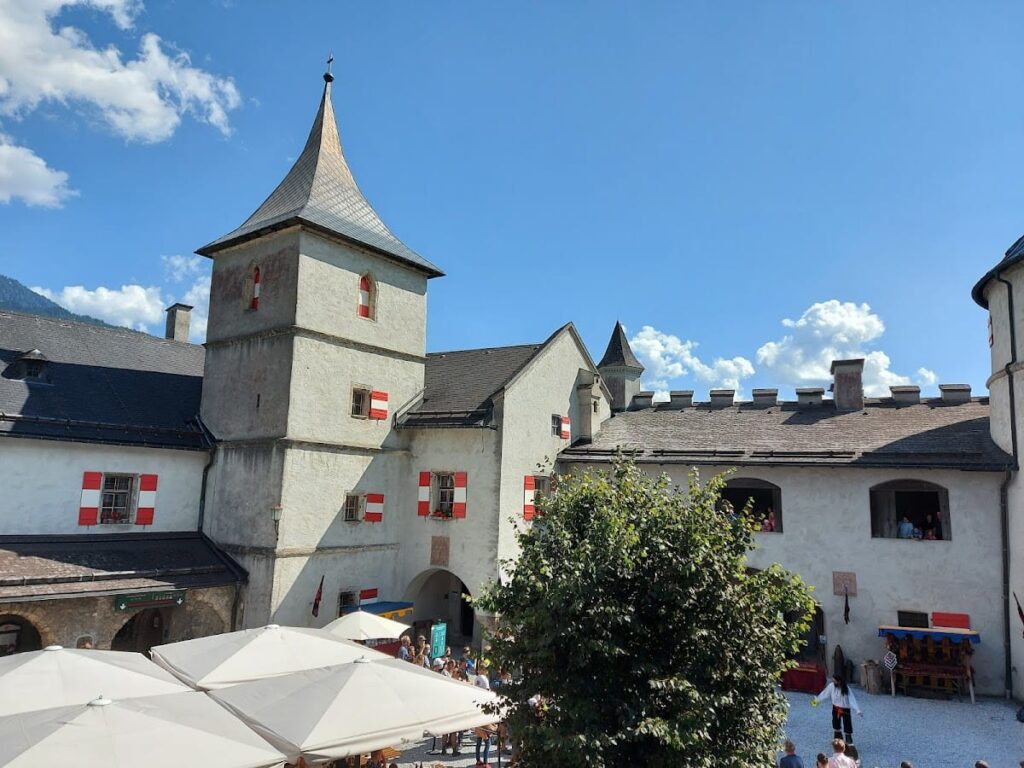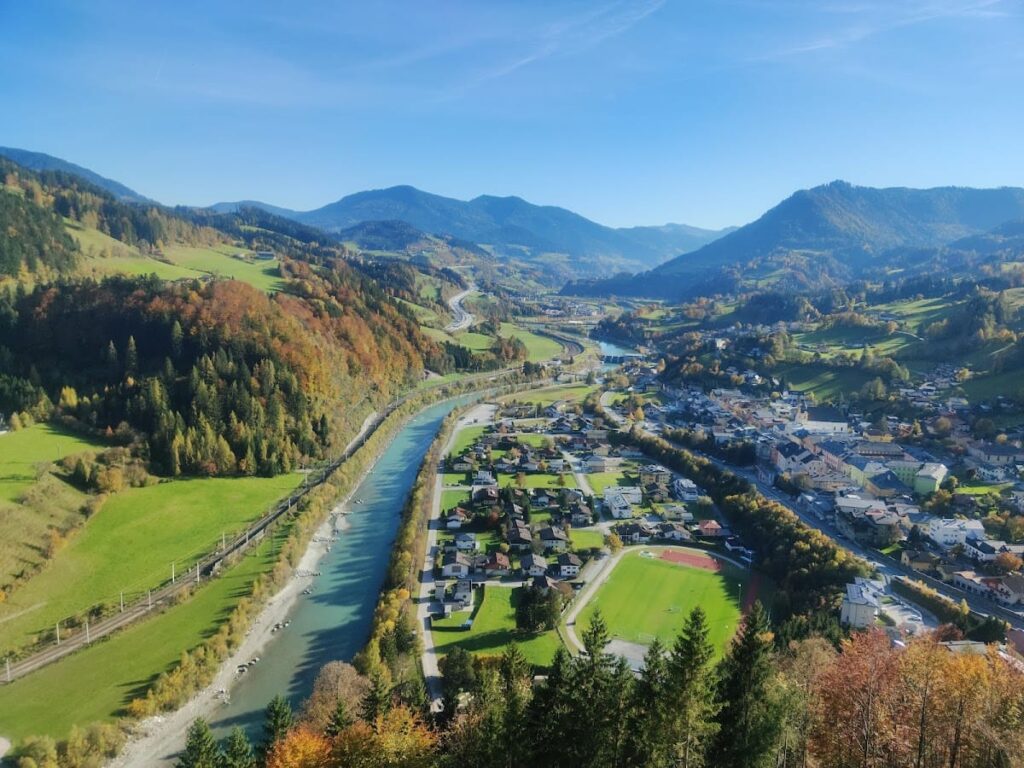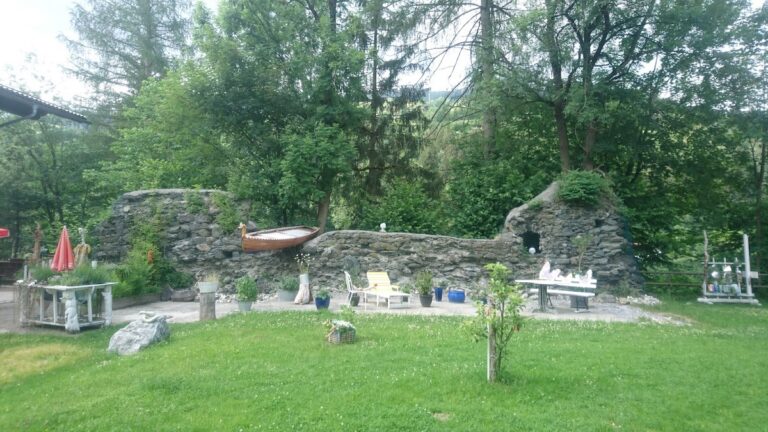Hohenwerfen Castle: A Medieval Fortress in the Austrian Alps
Visitor Information
Google Rating: 4.6
Popularity: High
Google Maps: View on Google Maps
Official Website: www.burg-hohenwerfen.at
Country: Austria
Civilization: Medieval European
Remains: Military
History
Hohenwerfen Castle stands above the Salzach River valley in the Austrian Alps, near the town of Werfen. It was built between 1075 and 1078 by Gebhard, the Prince-Archbishop of Salzburg, to guard the Lueg Pass. This mountain pass was the only southern route into Salzburg, making the castle a key defensive position. Gebhard constructed Hohenwerfen alongside two other fortresses, Hohensalzburg and Petersberg, to secure the region during a time of political conflict.
Gebhard supported Pope Gregory VII in the Investiture Controversy against Emperor Henry IV. Despite the castle’s defenses, Gebhard was forced to flee Salzburg in 1078. He returned in 1086 and spent his final years at Hohenwerfen, where he died in 1088. The castle then served as a military stronghold protecting important trade routes, especially those used for transporting salt, a valuable commodity in medieval Europe.
From the 12th to the 17th centuries, Hohenwerfen was expanded and fortified. Archbishop Konrad I enlarged the castle in the 12th century, adding a larger residential building and connecting it to the chapel. In the 15th and 16th centuries, the castle was adapted to withstand artillery attacks, with new bastions and towers constructed. During the German Peasants’ War of 1525–1526, rebelling peasants and miners captured and burned the castle. Archbishop Matthäus Lang von Wellenberg ordered its reconstruction soon after.
Hohenwerfen also functioned as a state prison. Notable prisoners included Archbishop Adalbert III in 1198, Count Albert von Friesach in 1253, Governor Siegmund during the Peasants’ War, and Archbishop Wolf Dietrich von Raitenau, who died in captivity in 1611. The castle’s role as a prison highlights its importance in regional governance and control.
During the Napoleonic Wars, Salzburg lost its status as a duchy. Napoleon’s forces seized Hohenwerfen and removed its artillery. However, Emperor Franz II (later Franz I of Austria) preserved the castle from destruction. In the 19th century, ownership changed several times. The castle was auctioned in 1822, bought by Count Oswald von Thun in 1876, and later acquired by Archduke Eugen Ferdinand in 1898, who collected weapons and art there.
A major fire in 1931 caused severe damage to Hohenwerfen. After restoration, the castle was used as a police training camp until 1987. During the Nazi era, starting in 1939, it served as a Nazi Party training center. After World War II, it became a gendarmerie training facility before being converted into a museum. The castle has also appeared in films, adding to its cultural presence.
Remains
Hohenwerfen Castle is built on a natural rock spur rising about 113 to 155 meters above the Salzach River valley. Its roughly square layout is dominated by a clock tower, originally a tall defensive tower called a bergfried. This tower was damaged during the Peasants’ War and later rebuilt in the late 16th century after being shortened.
The original 11th-century castle featured a ring wall about 35 by 35 meters enclosing a small residential building, known as a palas, and a chapel. Only fragments of these early walls survive today. In the 12th century, Archbishop Konrad I expanded the castle by adding a larger palas at right angles to the original, connecting it to the chapel. This created a cubic structure with a two-aisled hall in the basement, a middle floor for court functions, and a grand hall with biforium windows.
Defensive improvements in the 15th and 16th centuries included semicircular bastions with three-level galleries protecting the southeast corner. Covered galleries were built atop the eastern bastion walls. Artillery towers such as the Walserturm and the Fallturm were added. The Fallturm, a round tower with thick walls, served as the prison. It had no direct connection to the main castle; prisoners were lowered through an opening in the floor.
The castle’s entrance was originally defended by a moat and two drawbridges. The current gate, featuring a portcullis (a heavy, vertically sliding gate), dates from the 16th century. The castle chapel, dedicated to Saint Sigismund, is located on the eastern side of the courtyard within the two-story palas. It is one of the oldest parts of the castle, retaining medieval wooden structures that support a four-ton bell still rung on special occasions.
In the 17th century, the chapel was clad in marble and remodeled in Gothic style, though some Romanesque masonry remains. Its altar dates to 1650, and it houses a statue of the Virgin Mary with Child from around 1480, the oldest surviving artifact in the castle. The castle also contains a large bell called the Burgahnl, weighing 4,412 kilograms, cast in 1568 in Innsbruck and rung on major holidays.
Inside, the castle holds a weapons museum showcasing 700 years of firearms history, a hunting museum documenting traditions from the 13th century, and Austria’s first falconry museum, which includes live bird demonstrations. The grounds feature a gallery with stairs along the southern wall leading from the bastion to the second forecourt, and a cistern built in the early 17th century for water storage.
Hohenwerfen Castle has been carefully restored after damage from war, fire, and neglect. Its well-preserved structures provide insight into medieval military architecture and the castle’s varied roles over nearly a millennium.










